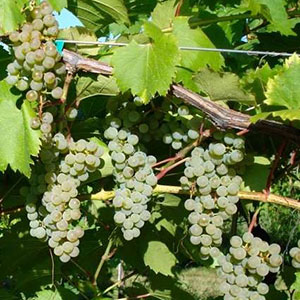
Frontenac Blanc is the newest member of the Frontenac family! Just like the family of
Pinot noir, Pinot Gris, and Pinot Blanc, another mutation of Frontenac has been found.
In the vineyard, Frontenac Blanc performs identically to Frontenac and Frontenac Gris.
These vines are very productive, vigorous and hardy to near -36F. Berries are yellow to
gold when ripe, producing a very light straw colored wine. Frontenac Blanc is
distinctly different from Frontenac Gris, expressing more pure stone fruit and melon
in the nose. Dry white blends, semi-sweet whites, late harvest, ice wines and straw
wines are all possible with Frontenac Blanc and Frontenac Gris.